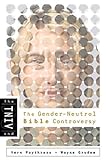The first verse of the passage by St. James is quite clear:
Is anyone among you suffering? Let him pray. Is anyone cheerful? Let him sing praise.This really crystalized my thinking about the essential question: why do hymns matter? It’s a question I’ve been trying to answer since I started this blog — I intuitively knew that hymns play a crucial role in worship, but I couldn’t articulate why.
Today, I think I have a clear answer. As with other elements of corporate (shared) liturgy, hymns serve three purposes:
- To communicate the faith. Before Gutenberg, Christians didn’t have personal Bibles and learned the faith from liturgy. Even today, children (and perhaps casual Christians) learn their earliest and perhaps most lasting theological lessons from hymn lyrics (a crucial reason why the words matter.)
- To preserve the faith. Regular readers know of my devotion to timeless hymns and the continuity they provide to the faith across the millennia. Our oldest hymnal dates from the 6th century, with written music perhaps 500 years later. Such continuity is part of conveying an eternal in our eternal Father.
- To celebrate the faith. Ever since I can remember, the part I most enjoy about Sunday — what gets me out of bed and out of the house (usually) on time — is singing the hymns. I go not to listen to a performance, but to be part of the corporate worship.
Let the word of Christ dwell in you richly, teaching and admonishing one another in all wisdom, singing psalms and hymns and spiritual songs, with thankfulness in your hearts to God.
 Or, as I sang in college from Mendelssohn’s 2nd Symphony (“Lobgesang” or Hymn of Praise):
Or, as I sang in college from Mendelssohn’s 2nd Symphony (“Lobgesang” or Hymn of Praise):All that hath life and breath, sing to the Lord.Which brings this back to the purpose of this blog. The sermon was (in part) about the final sentence of the passage from St. James:
My brothers, if anyone among you wanders from the truth and someone brings him back, let him know that whoever brings back a sinner from his wandering will save his soul from death and will cover a multitude of sins.I now believe that this blog (and the research it represents) will be my own personal ministry as a Christian, perhaps for my remaining days. I didn’t start this blog to win points on Judgement Day (if that’s even possible), but to share what I learn as part of my own search for deeper understanding.
I’ve been terribly gratified by the the observations and feedback from readers over the past 30 months, and hope that this dialog will continue.
